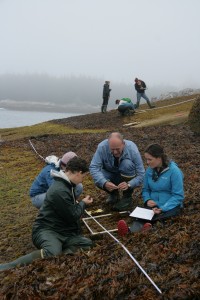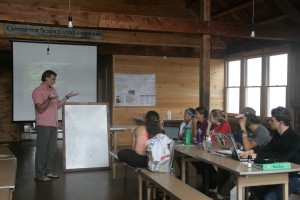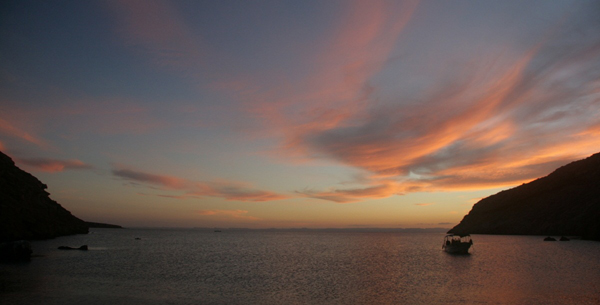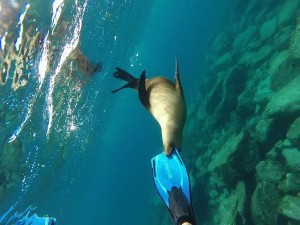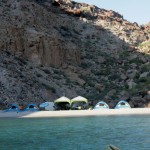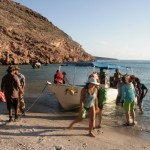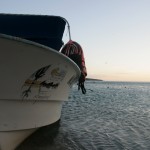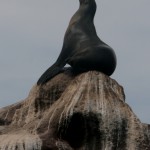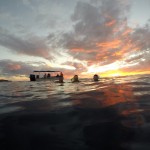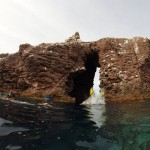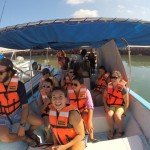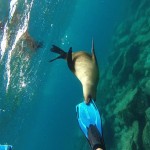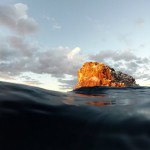Welcome and Introduction (2:15pm)
Session 1: The Intertidal (2:30pm)
Testing desiccation stresses and visual predation as mechanisms for maintaining a potential color polymorphism cline (Sam Walkes ’18)
Is the European Periwinkle invasion really from Europe? (Caroline Carter ’19)
Saving the snails: how feeding preferences of Carcinus maenas on Littorina littorea may determine the survival of Ilyanassa obsoleta (Meret Beutler ’19)
Predation of the softshell clam Mya arenaria by the nemertean worm Cerebratulus lacteus (Elizabeth Givens ’17)
Session 2: Aquaculture and Fisheries (3:45pm)
Does Mytilus edulis ingest and process the microplastics in Harpswell Sound? (Anna Blaustein ’19)
Finding an Easy and Efficient Method of Growing Microalgage for Biofuel: The Effect of Difference in Light and Nitrogen on Phaeodactylum tricornutum Lipid Production (Maya Morduch-Toubman ’18)
Multiple Species Interactions in Harpswell Sound Lobster Traps (Isaac Schuchat ’19)
Session 3: Ocean Acidification and Environmental Change (4:45pm)
Fundulus heteroclitus lateralization efficacy in response to rising sea temperatures and ocean acidification (Jonathan Harrison ’19)
The Effects of Climate Change Stressors on the Sea Star, Asterias forbesi, Regeneration (Amber Rock ’19)
The Effects of Ocean Acidification on Shell Resource and Assessment Behavior of Hermit Crab Pagarus longicarpus (Jackie Ricca ’19)
The Effects of Eutrophication and Oxygen Depletion on Bioluminescence in the Tropical Dinoflagellate Pyrocystis lunula (Ripley Mayfield ’19)
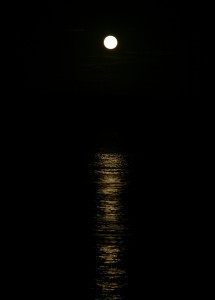 above the silhouetted pines of Green’s Island. The water between Green’s and Hurricane starts to shimmer in the growing moonlight. The wind picks up slightly, floating over small snippets of conversation from the canteen. I glance aside at the solar-powered aura of the central community building; a warm chocolate brownie is calling my name, but I linger another moment in the spectacle of the enormous rising moon.
above the silhouetted pines of Green’s Island. The water between Green’s and Hurricane starts to shimmer in the growing moonlight. The wind picks up slightly, floating over small snippets of conversation from the canteen. I glance aside at the solar-powered aura of the central community building; a warm chocolate brownie is calling my name, but I linger another moment in the spectacle of the enormous rising moon.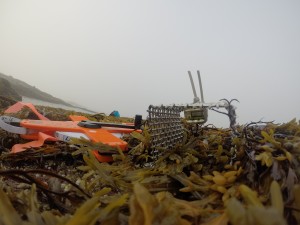
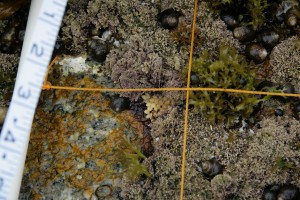 a quadrat which they use to count critters along the transect. They discuss what species of algae they think they have found before confirming with one of the instructors. Lobster boats blink in and out of the ephemeral fog like diesel powered ghosts. Our small army of green muck boots splashes in and out of the waves as we hop from point to point along our transects.
a quadrat which they use to count critters along the transect. They discuss what species of algae they think they have found before confirming with one of the instructors. Lobster boats blink in and out of the ephemeral fog like diesel powered ghosts. Our small army of green muck boots splashes in and out of the waves as we hop from point to point along our transects.